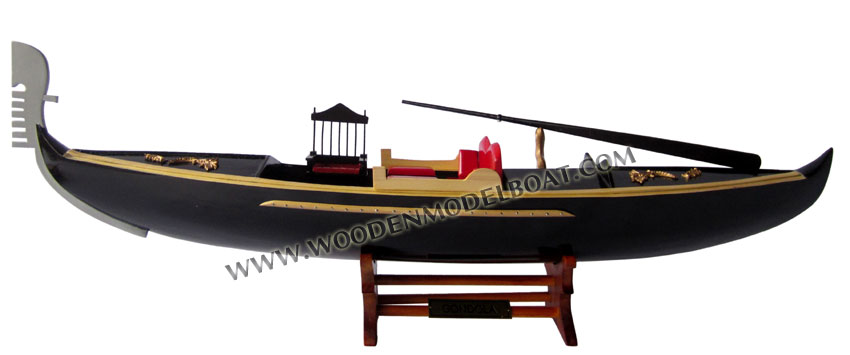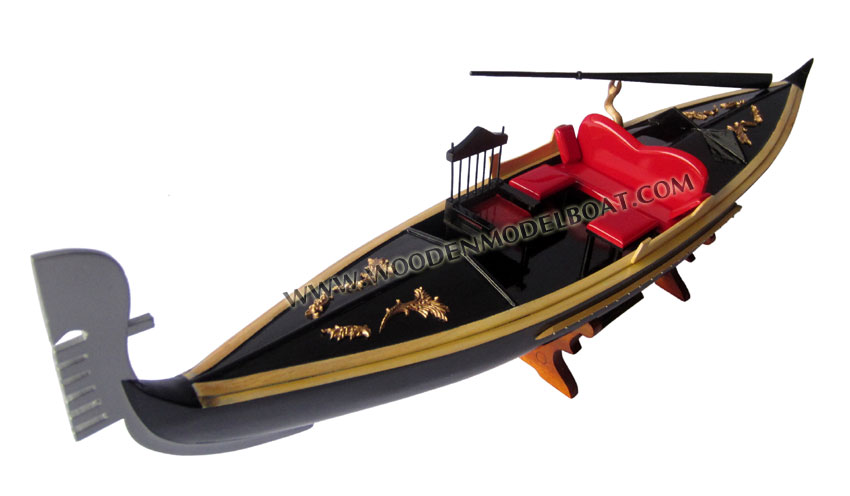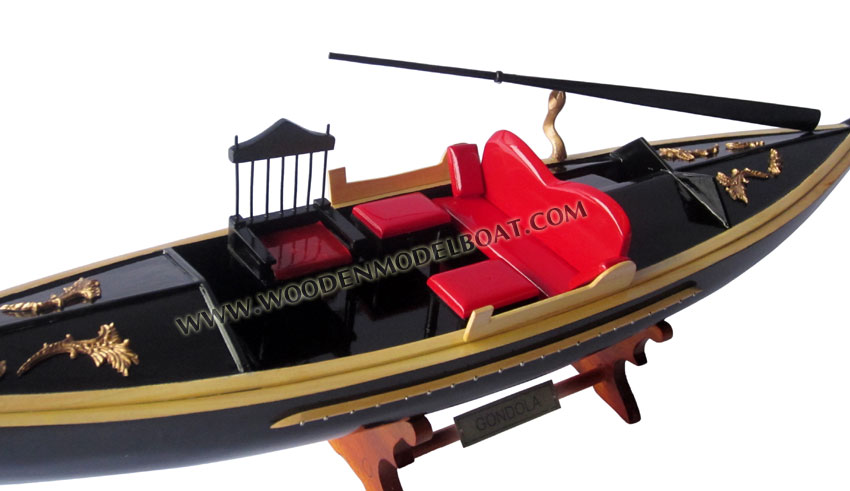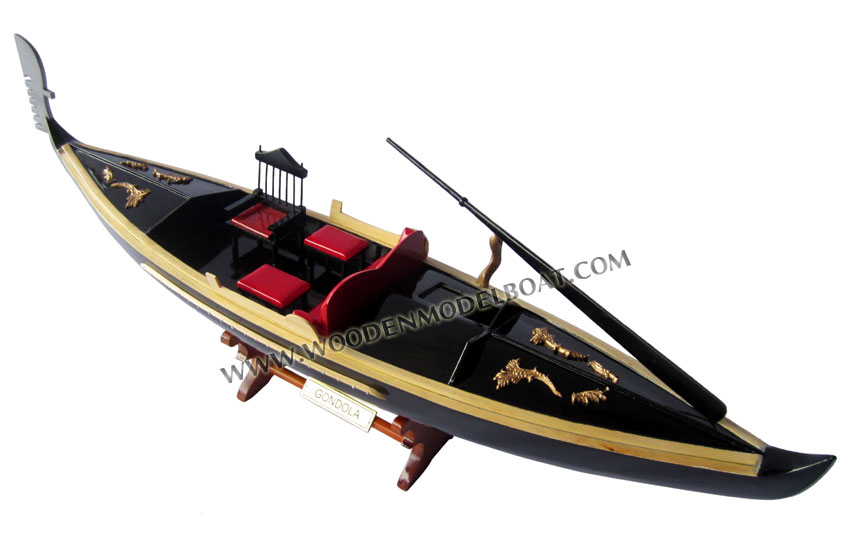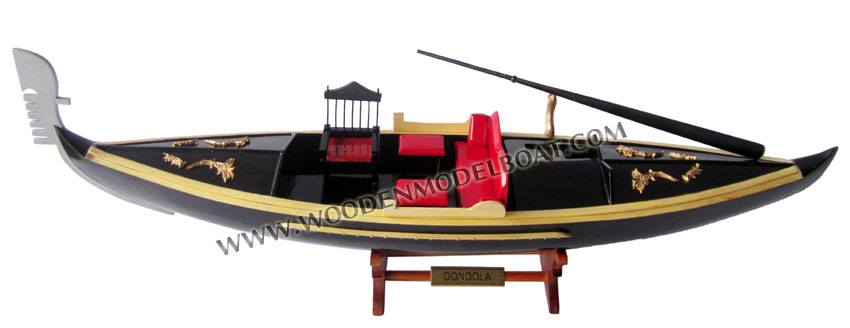|
History
The gondola is a traditional,
flat-bottomed Venetian rowing boat, well suited to the conditions of
the Venetian Lagoon. For centuries gondolas were once the chief means
of transportation and most common watercraft within Venice. In modern
times the iconic boats still have a role in public transport in the
city, serving as traghetti (ferries) over the Grand Canal. They are
also used in special Regattas (rowing races) held amongst gondoliers.
Their primary role, however, is to carry tourists on rides at
established prices.
Usage
Gondola showing use of oarThe gondola is propelled by a man (the
gondolier) who stands facing the bow and rows with a forward stroke,
followed by a compensating backward stroke. Contrary to popular
belief, the gondola is never poled like a punt as the waters of Venice
are too deep. Until about two hundred years ago, gondolas often were
fitted with a "felze," a small open cabin, to protect the passengers
from sun or rain. A sumptuary law of Venice required that gondolas
should be painted black, and they are customarily so painted now.
It is estimated that there were several thousand gondolas during the
18th century. There are several hundred today, most of which are for
hire by tourists, while a few are in private ownership and use.
During their heyday as a means of public transports, teams of 4 men; 3
oarsmen and a 4th person, primarily shore based and responsible for
the booking/administration of the gondola (Il Rosso Riserva), would
share ownership of a gondola. However as the gondolas became more of a
tourist attraction than a mode of public transport all but one of
these cooperatives and their offices have closed. The category is now
protected by the Institution for the Protection and Conservation of
Gondolas and Gondoliers, headquartered in the historical center of
Venice.
The construction of the gondola continued to evolve until the mid-20th
century, when the city government prohibited any further
modifications. The oar or rèmo is held in an oar lock known as a
fòrcola. The forcola is of a complicated shape, allowing several
positions of the oar for slow forward rowing, powerful forward rowing,
turning, slowing down, rowing backwards, and stopping. The ornament on
the front of the boat is called the fèrro (meaning iron) and can be
made from brass, stainless steel, or aluminium. It serves as
decoration and as counterweight for the gondolier standing near the
stern.
Gondolas parking Gondolas are hand made using 8 different types of
wood (fir, oak, cherry, walnut, elm, mahogany, larch and lime) and are
composed of 280 pieces. The oars are made of beech wood. The left side
of the gondola is made longer than the right side. This asymmetry
causes the gondola to resist the tendency to turn toward the left at
the forward stroke. It is a common misconception that the gondola is a
paddled vessel when the correct term is rowed i.e. "I rowed my gondola
to work".
The profession of Gondolier is controlled by a Guild, which issues a
limited number of licenses granted after periods of training and
apprenticeship, and a major comprehensive exam which tests knowledge
of Venetian history and landmarks, foreign language skills, and
practical skills in handling the Gondola typically necessary in the
tight spaces of Venetian canals. In 2009 a woman, Giorgia Boscolo,
daughter of a gondolier, passed the first test to be admitted to the
official course of training for substitute gondoliers; if she were to
pass all the future tests, she would become the first female
gondolier.
The gondola is also one of the vessels typically used in both
ceremonial and competitive Regattas, rowing races held amongst
gondoliers using the technique of Voga alla Veneta.
The origin of the word "gondola" has never been satisfactorily
established, despite many interesting theories. |

